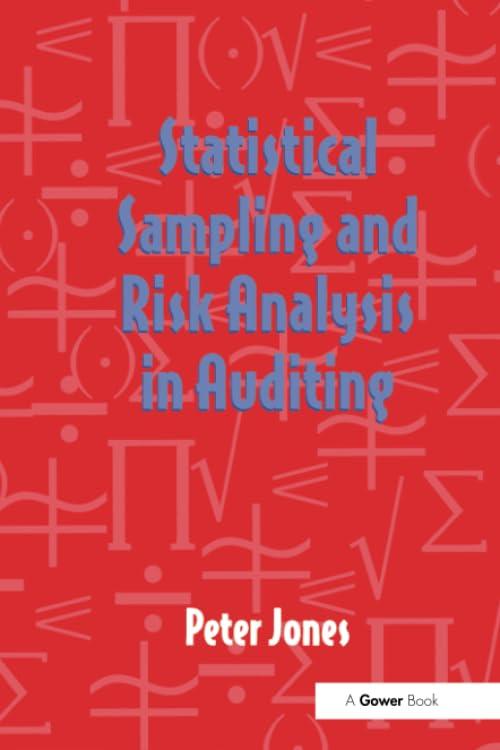Question
An improper cutoff of transactions around year-end occurs when journal entries arc recorded in the wrong year. In this case. you arc to determine the
An improper cutoff of transactions around year-end occurs when journal entries arc recorded in the wrong year. In this case. you arc to determine the effects of various cutoff misstatements relating to recording cash receipts received on accounts receivable and the recording of credit sales. To effectively consider the effects of an improper cutoff. it is helpful to consider the underlying journal entries:
Type of Transaction Proper Journal Entry (Entries)
Cash receipt on an account receivable Cash 3,000.00
Accounts Receivable 3,000.00
Credit sale-periodic inventory system Accounts receivable 2,000.00
Sales 2,000.00
Credit sale-perpetual inventory system Accounts receivable 2,000.00
Sales 2,000.00
An example of a possible improper cutoff is to "closethe cash receipts journal on December 30 and include December 31 sales in the subsequent year (e.g. The entry is dated January I rather than December 31). As a result, cash is understated by $3,000. while accounts receivable is overstated by $3.000 for the year just ended. The effects of closing the sales journal depend upon whether a periodic inventory or perpetual inventory system is in use. The effects of 'leaving open 'journals past year-end and dating January entries as of December may be determined in a similar manner.
Required:
Assume that the client made the following actual credit sales and received cash receipts as follows after 12/29/20x8:
| Sales | Cost of Goods Sold | Cash Receipts (Receivables Collected) | |
| 12/30/X8 | 1,000 | 600 | 4,000 |
| 12/31/X8 | 2,000 | 1,300 | 3,000 |
| 1/1/X9 | 3,500 | 2,200 | 2,500 |
| 1/2/X9 | 4,000 | 2,900 | 3,200 |
Determine the overstatements and understatements that would result from the following situations. Assume that each situation is independent of one another. As an illustration. situation I has been solved for you. To simplify the problem .in the case of a perpetual inventory, assume that the year-end inventory count did not identify and correct the misstatement(s).
| Situation | Cash | Acct. Rec. | Inventory | CGS | Sales | Income | |
| 1. Zhang Inc. left the cash receipts journal open after year. end for an extra day and included January 1cash receipts in the December 31 totals. The company uses a periodic inventory system. What effect would this have on 20X8? | 12,500 (o) | 12,500 (u) | |||||
| 2. Zhang Inc. closed the cash receipts journal at 12/29 and reported the last two days of cash receipts in January of 20X9. The company uses a periodic inventory system. What effect would this have on 20X8? | |||||||
| 3. Zhang Inc. left the sales journal open after year end for an extra day and included January 1 sales in the December 31 totals. The company uses a periodic inventory system. What effect would this have on 20X8? | |||||||
| 4. Same as 3, but the company uses a perpetual inventory system. | |||||||
| 5. Zhang Inc. closed the sales journal at 12129 and reported the two last days sales in January of 20X9. The company uses a perpetual inventory system. What effect would this have on 20X8? | |||||||
| 6. Zhang Inc. left both the sales journal and the cash receipts journal open through January 2 and reported the first two days' transactions in December of 20X8.The company uses a periodic inventory system. What effect would this have on 20X8? |
Step by Step Solution
There are 3 Steps involved in it
Step: 1

Get Instant Access to Expert-Tailored Solutions
See step-by-step solutions with expert insights and AI powered tools for academic success
Step: 2

Step: 3

Ace Your Homework with AI
Get the answers you need in no time with our AI-driven, step-by-step assistance
Get Started


